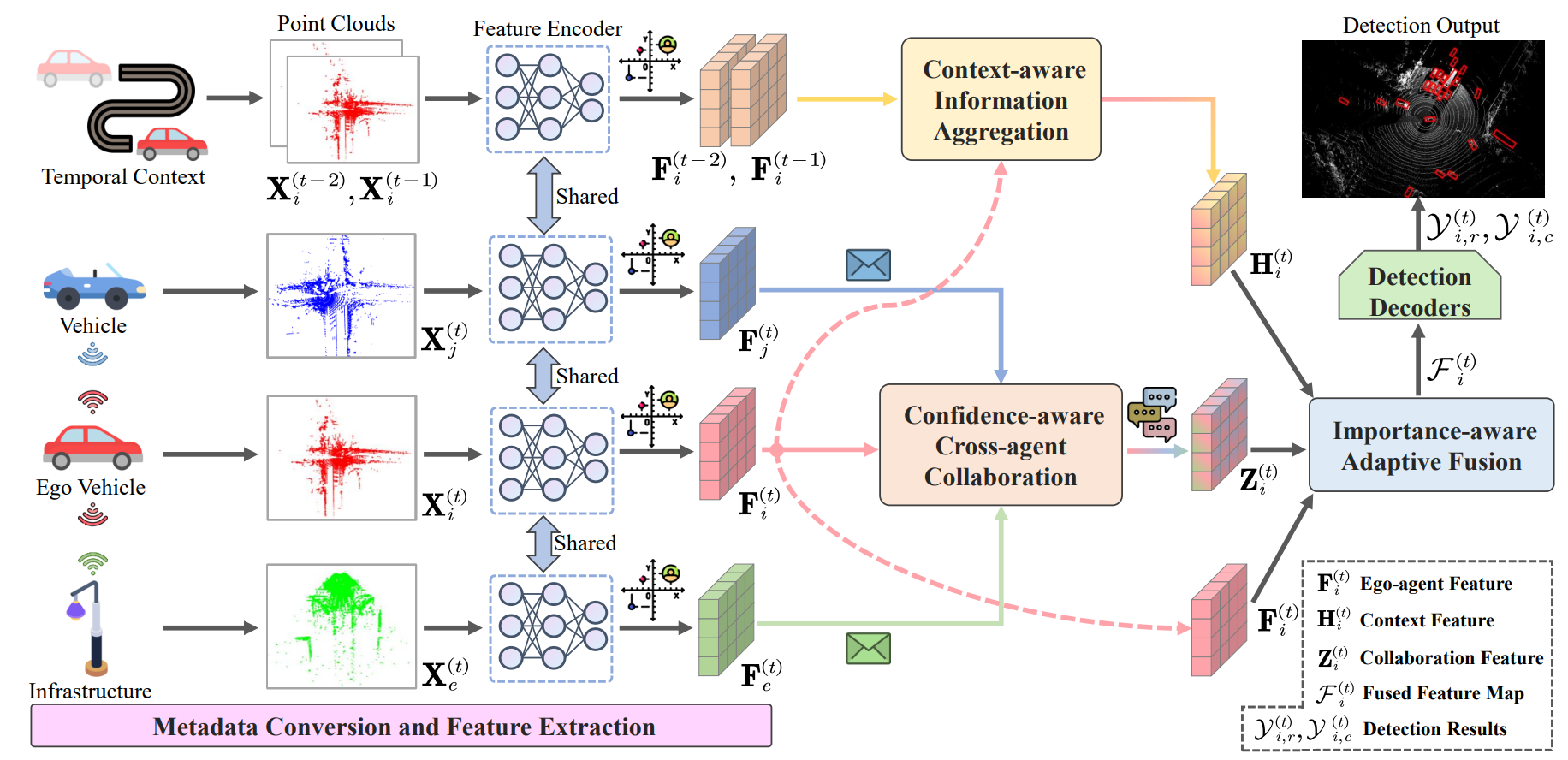Qualitative Results
Qualitative comparison results in real-world scenarios from the DAIR-V2X dataset. Green and red boxes denote ground truths and detection results, respectively. Compared to the previous SOTA models, our method achieves more accurate detection results.
